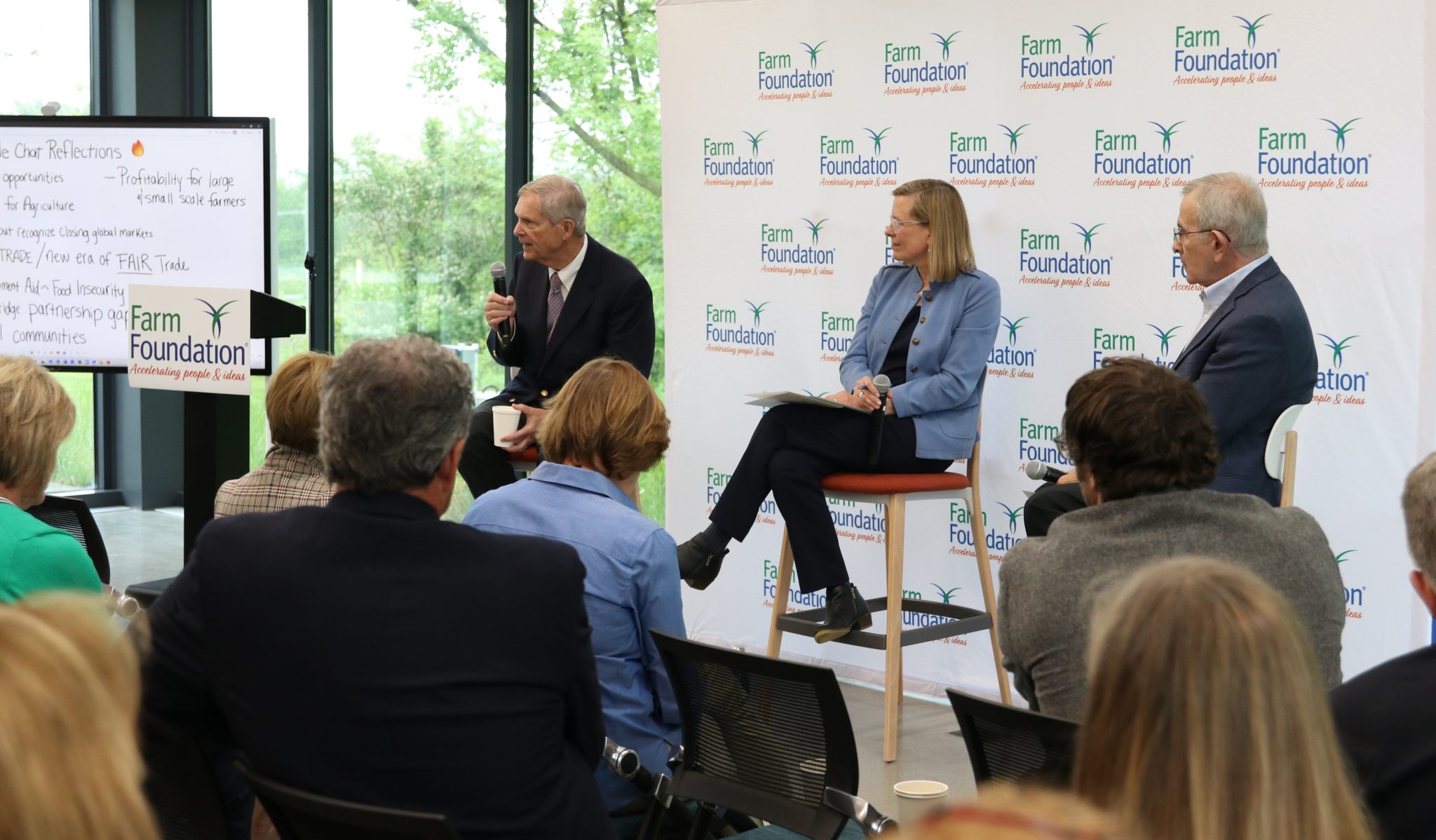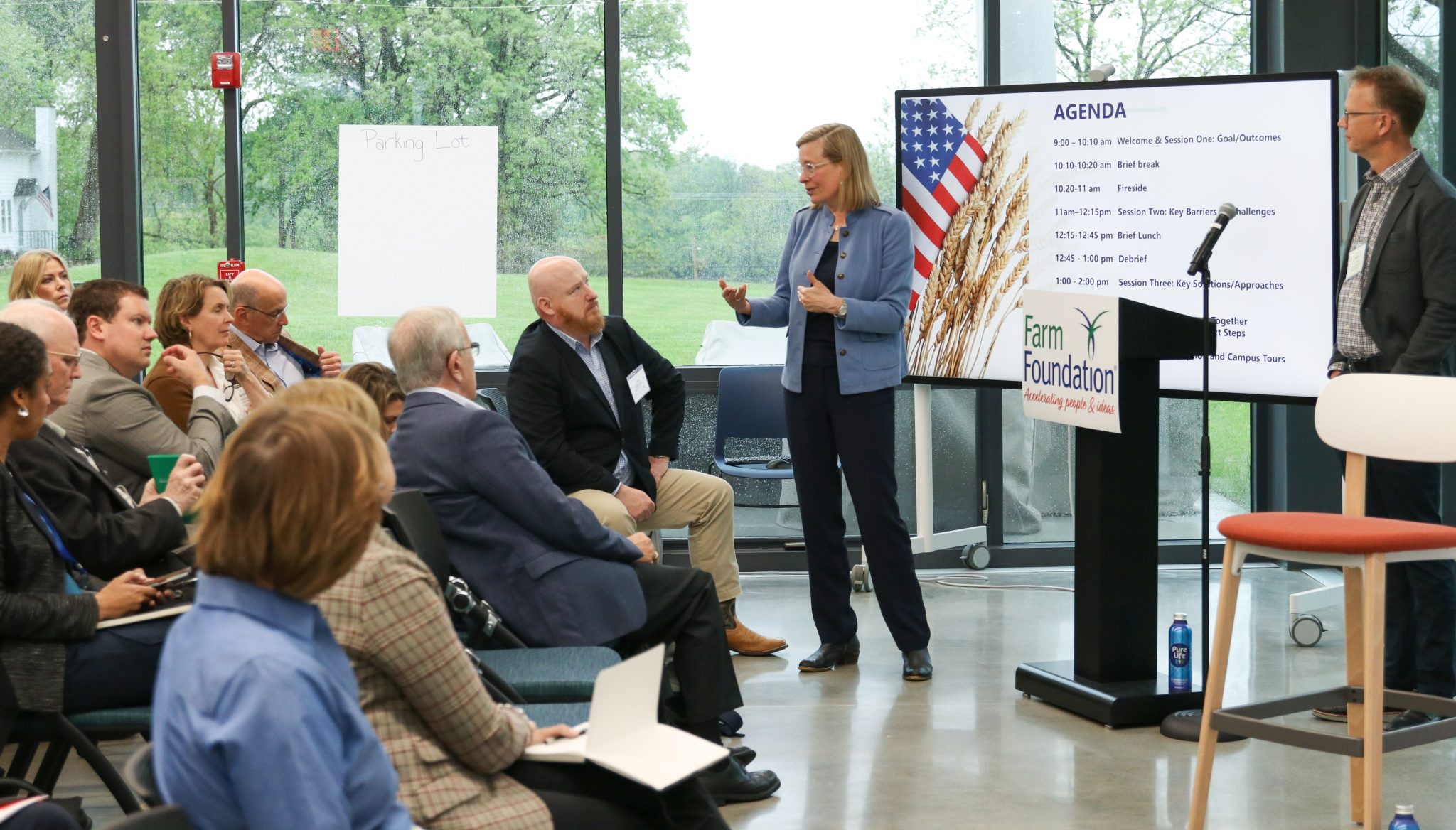
A man closes the entrance to Fort McHenry National Monument and Historic Shrine on Oct. 3 in Baltimore because of the federal government shutdown. States are currently covering costs of some federal programs, but it’s unclear whether they will be repaid once the government reopens. (Photo by Andrew Harnik/Getty Images)
States are doing what they generally do during a federal government shutdown: continuing to operate programs serving some of the neediest people.
That means schools are still serving federally subsidized meals and states are distributing funding for the federal food stamp program. For now.
If the shutdown drags on and federal dollars run out, states can only keep programs going for so long. States may choose to pay for some services themselves so residents keep their benefits.
But this time, state leaders have new worries about getting reimbursed for federal costs once the federal spending impasse is resolved. That’s traditionally been the practice following a shutdown, but the Trump administration’s record of pulling funding and targeting Democratic-led states has some officials worried about what comes after the shutdown.
Many states already struggled to balance their own budgets this year. And some fear going without federal reimbursement for shutdown costs could force states to make painful cuts to their own budget priorities.
Nevada State Treasurer Zach Conine, a Democrat, said the administration has not made good on its word to states in recent months — freezing some congressionally approved funding and cutting already awarded grants. So it’s likewise unclear whether the federal government will follow previous practice and reimburse states for covering shutdown costs of crucial federal programs such as food assistance.
“I think everything is a risk with this administration. … We in the states are kind of left holding the bag yet again as the federal government tries to sort out what it wants to be when it grows up,” he told Stateline.
Nevada entered the shutdown with more than $1.2 billion in reserves. Last week, Republican Gov. Joe Lombardo’s office said in a statement that state funds would be adequate to cover “a short period of time with minimal disruption to services.”
But the governor’s office said a shutdown of more than 30 days would cause more significant challenges for the state.
Lombardo’s office did not respond to Stateline’s questions. But last week, it released a three-page document on the shutdown, saying it expected the federal government to reimburse states once the budget stalemate is resolved.
“As D.C. works through its issues, our administration will continue to support Nevadans in any way we can throughout this unnecessary federal government shutdown,” Lombardo said in the statement.
We in the states are kind of left holding the bag yet again as the federal government tries to sort out what it wants to be when it grows up.
– Nevada State Treasurer Zach Conine, a Democrat
While mandatory programs such as Medicaid and Social Security continue to send funds to beneficiaries during the shutdown, funding for other safety net programs such as food assistance are more uncertain. The federal government told states there were enough funds for the food stamp program to cover October benefits, though the special food program for women, infants and children may run out of money sooner.
By furloughing workers and halting federal spending, the shutdown could cost the national economy $15 billion per week, President Donald Trump’s economic advisers estimated.
The White House says a prolonged shutdown will affect the economies of every state by reducing employment, federal benefits and consumer spending. White House estimates say this could cost Michigan $361 million per week in lost economic output, for example, while Florida could lose $911 million each week.
‘Fend for themselves’
Some federal services are shuttered during a shutdown: The Environmental Protection Agency has ceased many research, permitting and enforcement efforts, and official jobs data is no longer being released. Federal funds for other programs, including food assistance, are expected to last through the end of the month. But states can elect to spend their own funds on these programs, which were previously authorized by Congress and state legislatures.
Before the shutdown, states were stockpiling reserve funding. The National Association of State Budget Officers reported most state budgets this year maintained or increased rainy day funds. At the same time, state and local governments are borrowing record amounts: As much as $600 billion in municipal bonds is projected to be issued by the end of 2025.
“So states and localities are kind of getting the message they really need to fend for themselves much more than they ever had,” said William Glasgall, public finance adviser at the Volcker Alliance, a nonprofit that works to support public sector workers.
Since January, the Trump administration has stripped states and cities of billions of dollars that Congress approved for education, infrastructure and energy projects. Glasgall said that record leaves states with legitimate concerns about getting repaid for their shutdown-related expenses — a prospect that would likely spark even more lawsuits from Democratic-led states.
“They’ve already, before the shutdown, started rolling back federal funding, and I don’t see any reason why they would stop now,” he said. “The recissions that have been announced are pretty harsh, and it’s money we’re expecting and not getting.”
The last shutdown, which lasted five weeks during Trump’s first term, delayed billions in federal spending and reduced gross domestic product — the value of all goods and services produced — by $11 billion, the Congressional Budget Office estimated in 2019. Experts say states were repaid for costs they incurred providing federal services during that shutdown.
In Minnesota, State Budget Director Ahna Minge said staff have been studying previous shutdowns. But at a news conference with Democratic Gov. Tim Walz last week, she characterized this shutdown as “unpredictable.”
“The current federal administration may not follow the historic playbook,” she said.
Walz said farmers would be among the first hit as the federal Farm Service Agency has ceased operations in the middle of the state’s harvest season. Among other duties, that agency works on disaster assistance and processes loans during harvest to protect farmers against commodity price fluctuations.
Minge said Minnesota officials think programs like the Supplemental Nutrition Assistance Program and the Special Supplemental Nutrition Assistance Program for Women, Infants and Children have enough existing federal funds to operate through October. But she said the state budget cannot backfill all the commitments made by federal programs.
“What we know is that the longer a shutdown lasts, the greater the impact to state programs and services,” she said.
Connecticut Gov. Ned Lamont, a Democrat, has pledged to use state dollars to keep WIC afloat if needed, The Associated Press reported. And Colorado lawmakers set aside $7.5 million just before the shutdown to keep WIC running.
Already under strain
In Maryland, the shutdown is compounding the economic instability from Trump’s ongoing efforts to shrink the number of federal employees, agencies and spending.
With more than 160,000 federal employees, Maryland’s economy relies heavily on the federal workforce. The Trump administration has said it may deny back pay to hundreds of thousands of furloughed federal workers, despite a law he signed in 2019 guaranteeing such back pay.
Chief Deputy Comptroller Andrew Schaufele told lawmakers last week that a shutdown could cost the state $700,000 per day in lost tax revenue.
Democratic Gov. Wes Moore pledged to continue funding some federal programs, but said the state would not tap into its rainy day funds to do so.
“We’re going to continually evaluate how long we can go,” he said at a news conference.
As for getting repaid, Moore spokesperson David Turner told Stateline that the state had received no indication that the federal government would deviate from past practice, “but we are monitoring closely.”
This fiscal uncertainty hits states as they are already struggling to respond to the strain of federal agency layoffs and cuts in the major tax and spending law Trump signed this summer. The law slashed billions in social service funding and created costly new bureaucratic burdens for states, which administer Medicaid and food assistance programs.
“There’s no way, really at this point, to sort of assess with any level of confidence what’s going to happen when you also have these massive layoffs that were going on pre-shutdown,” said Lisa Parshall, a professor of political science at Daemen University in New York. “There’s just a real sense from states and localities — and I think rightly so — that that kind of reliability of the federal government is now in question.”
It may not be a question of whether states are reimbursed for their shutdown expenses, but which states are reimbursed, Parshall said. The Trump administration has publicly targeted funding of liberal-led states and cities over policy disagreements, raising the possibility it could do something similar with the shutdown.
“Whether it’s a good thing or a bad thing, you know, you could argue,” she said. “But it’s definitely a thing that seems to be adding to this level of uncertainty — this shutdown feels different.”
In California, officials just closed a nearly $12 billion shortfall when negotiating the budget that was approved in June. The budget deficit is expected to grow to more than $17 billion next year, said H.D. Palmer, spokesperson for the State of California Department of Finance, which advises the governor and state agencies on budget issues.
“There isn’t a long-term, open-ended line of credit available if this drags out,” he said of the federal government shutdown.
The depth of reserve funds available varies by federally funded program, he said. CalFresh, California’s name for its Supplemental Nutritional Assistance Program, has enough funds to cover food stamp benefits for this month, but anything beyond that is uncertain.
“If the duration of this is in the matter of days, it will be an inconvenience, but should not pose a massive problem,” he said. “However, if it does drag out for an extended period of time, then clearly it’s going to be a problem.”
Stateline reporter Kevin Hardy can be reached at khardy@stateline.org.
This story was originally produced by Stateline, which is part of States Newsroom, a nonprofit news network which includes Wisconsin Examiner, and is supported by grants and a coalition of donors as a 501c(3) public charity.















